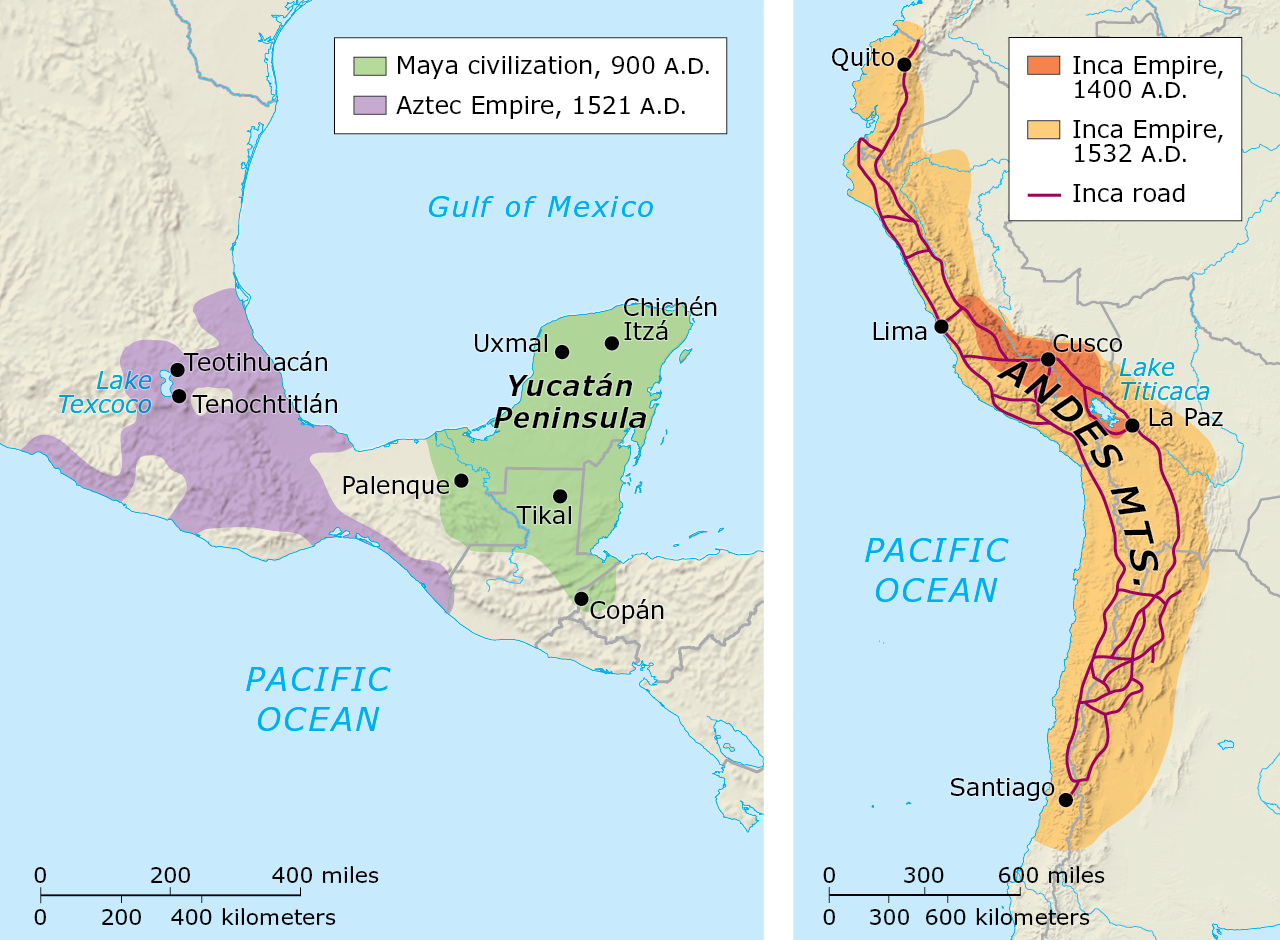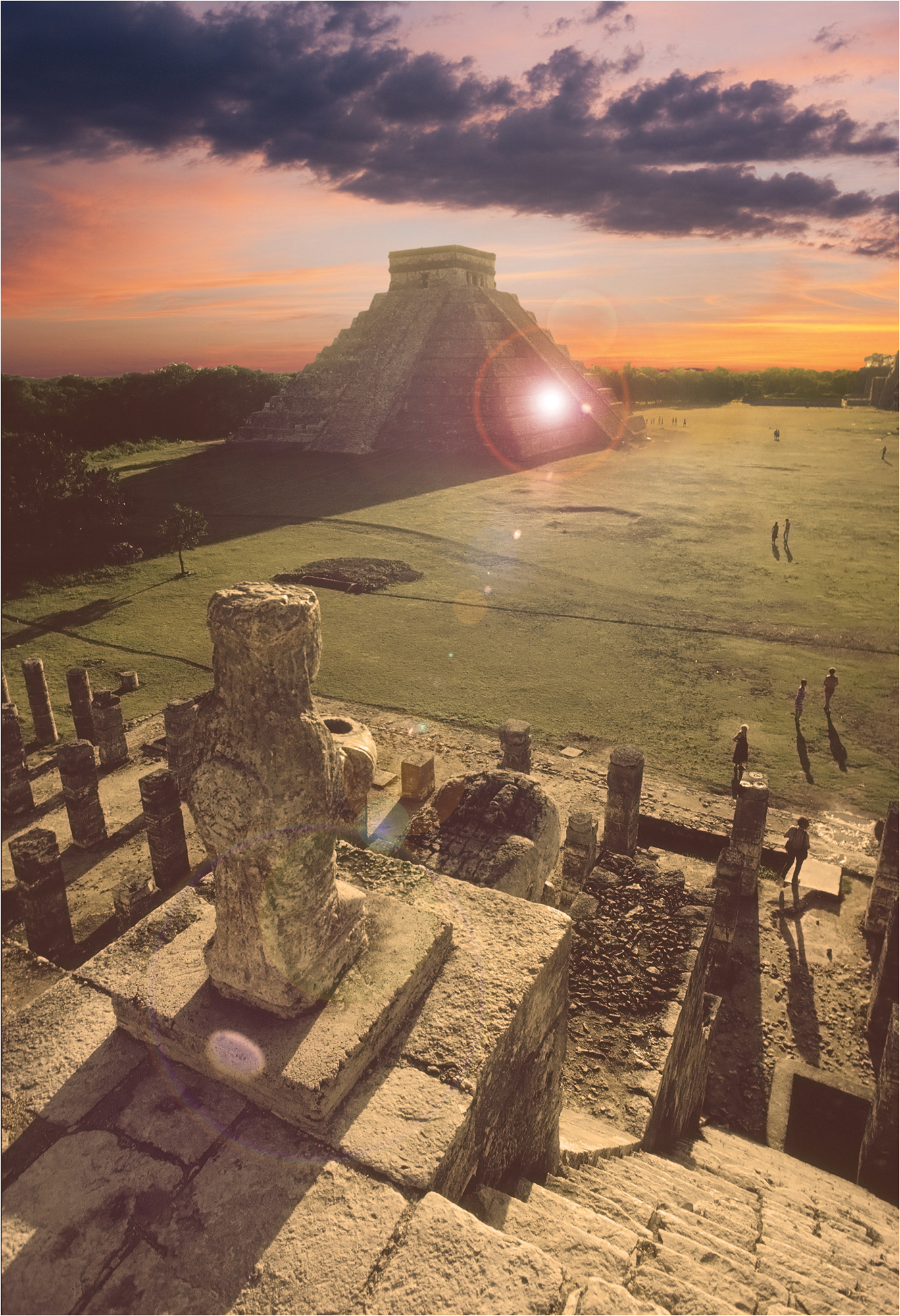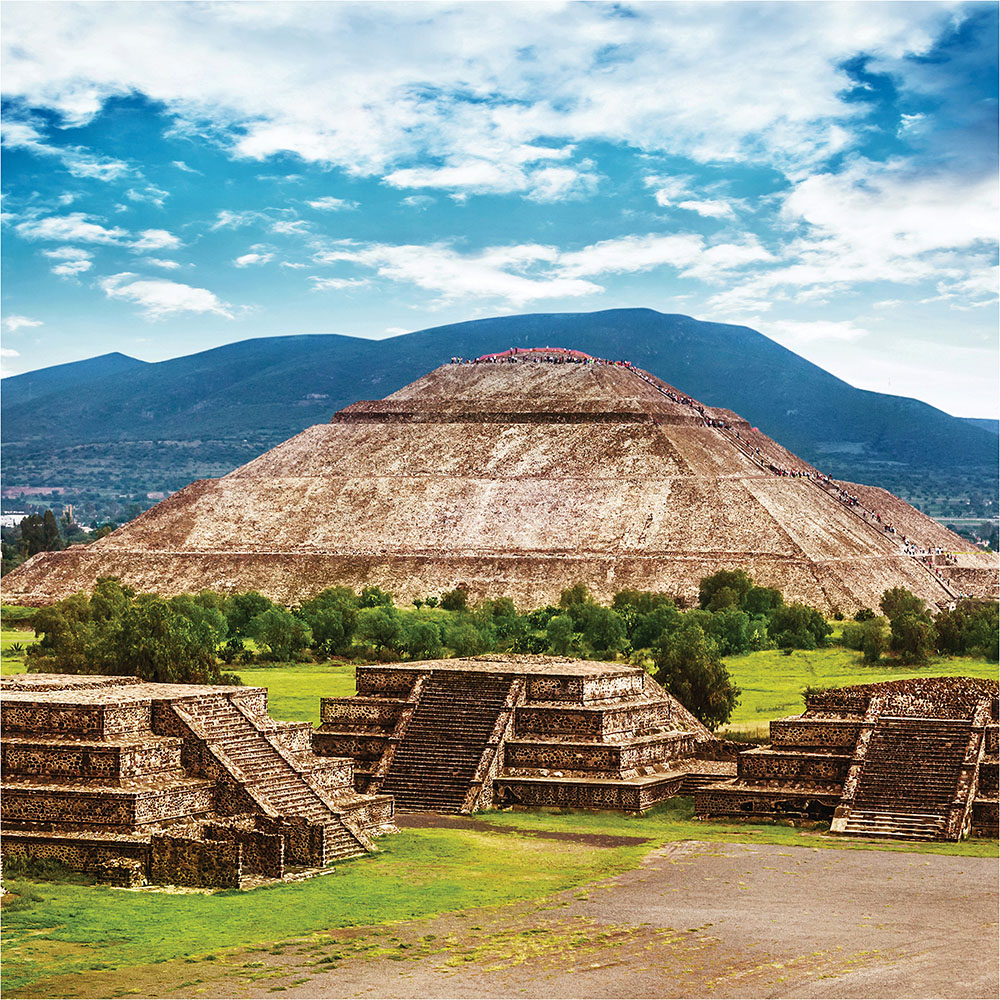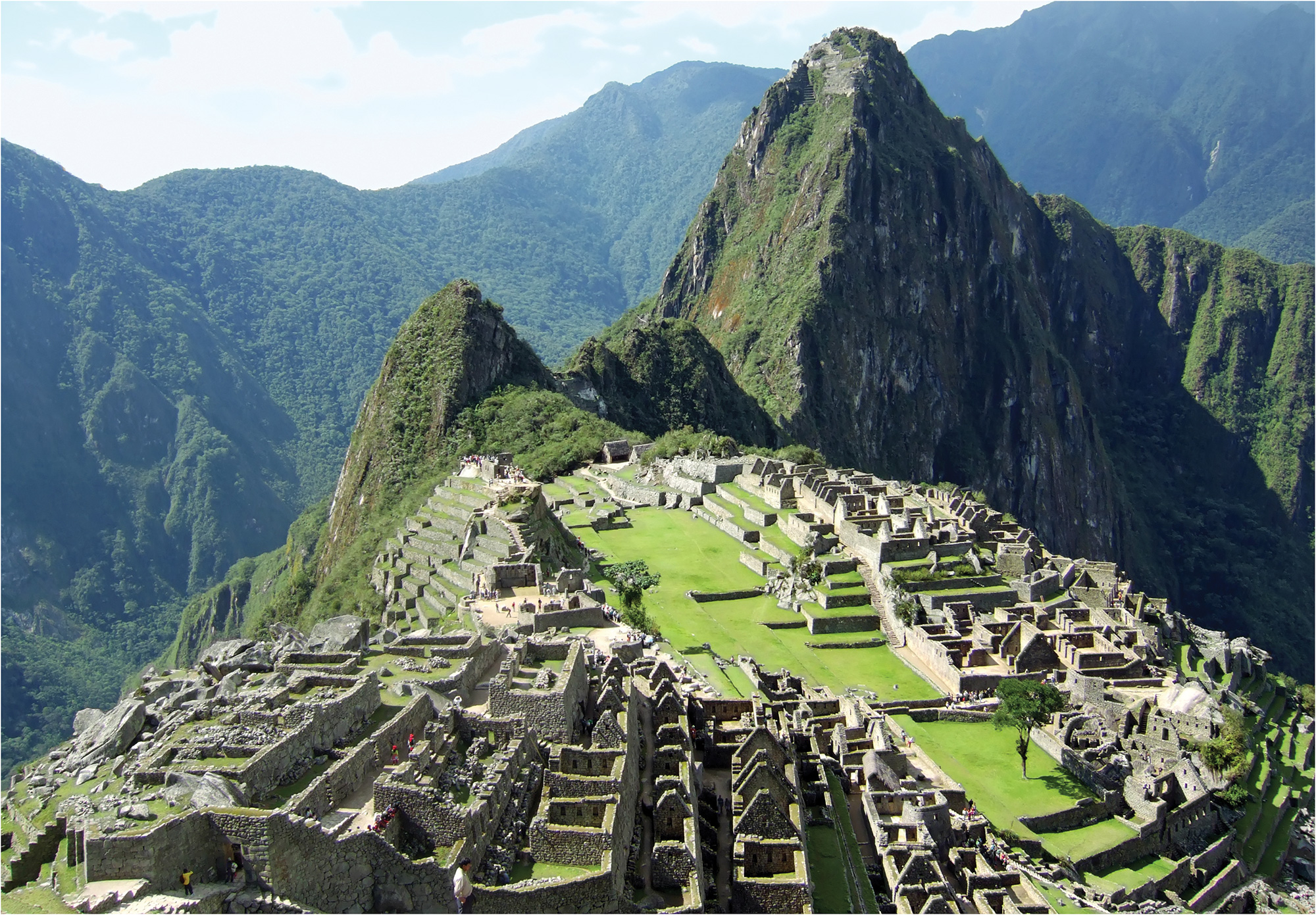1.2 Early Civilizations
-
What were the three main civilizations in early America?
Wheat, Rice, Corn: The Stuff of Civilization
The discovery of how to cultivate plants and the changes that resulted from this discovery constituted the Agricultural Revolution, which happened at least twice: once in Asia and once in the Americas. In both places, it transformed the way large numbers of people lived. Agriculture tied people to particular pieces of land, which became valuable enough to fight over. It allowed populations to grow far beyond the numbers that could be sustained by hunting and gathering alone. Cities emerged, and with cities came governments and what later generations would call civilizations (employing the Latin root for city). In some cases, the cities and civilizations expanded to become empires.
Map 1.2
Maya, Aztec, and Inca Civilizations

Advanced civilizations developed in Central and South America. The Aztecs occupied the highlands of modern central Mexico. The Maya emerged in the lowlands of the Yucatán Peninsula. The Inca empire ran along the Andes Mountains.
In the Americas, there emerged three great civilizations. The earliest arose in the tropical forest of Central America. Starting some four thousand years ago, the Maya built broad cities of stone, remnants of which still stand today. Religion played a central role in Maya life; the largest structures in Maya cities were temples. The Maya developed sophisticated calendars and numbering systems; they understood the motion of the stars and planets as well as any people on earth. The Maya civilization gradually declined, for reasons unclear to modern anthropologists and historians but possibly related to changing climate. The Maya people didn’t vanish; they form a substantial portion of the modern population of Central America.

MAYA PYRAMID, CHICHÉN ITZÁ, MEXICO The Maya built great stone cities like this one at Chichén Itzá.
Source: Christian Delbert/Shutterstock
North of the Maya, centered in the high valley of what would become central Mexico, a second civilization emerged. The Aztecs were the most assertive of the peoples of the region; in time, they came to dominate and subjugate their neighbors and construct an empire. The Aztecs built a great city, Tenochtitlán, on an island in the middle of a lake in their valley. This city—the predecessor of Mexico City—was their stronghold and their religious center. They made sacrifices to their gods; among the sacrifices were humans, which their gods were thought to value most highly. The Aztec empire persisted into the modern period; Spanish explorers encountered the Aztecs in the early sixteenth century.

AZTEC PYRAMIDS, TENOCHTITLÁN, MEXICO The Pyramids of the Sun and Moon played a crucial role in the religious and cultural life of the Aztecs of central Mexico.
Source: Anna Omelchenko/Shutterstock
Far to the south, in the Andes Mountains of South America, the Incas created a third civilization. The Incas combined certain traits of the Maya and the Aztecs, being at once a highland people and a people of the forest. They conquered their neighbors and constructed a large empire, stretching two thousand miles from north to south. To knit their far-flung domain together, the Incas built an elaborate network of all-weather roads. They invented a system of record-keeping that involved complicated schemes of knot-tying. These quipu, as the knot arrangements were called, might have doubled as a kind of writing.

MACHU PICCHU, CUSCO, PERU The Inca city of Machu Picchu, high in the Andes, was lost to the outside world for centuries after the Spanish conquest of Peru.
Source: Amy Nichole Harris/Shutterstock
The civilizations of the Maya, the Aztecs, and the Incas revealed many of the same properties and tendencies of civilizations elsewhere. Societies were stratified into elites, who held power and wealth, and lower classes, who did most of the work. Governments made and enforced laws; they established alliances with some neighbors and waged war against others. Religion supported government and vice versa. The power of the governments waxed and waned, depending on the wisdom, talent, and ruthlessness of the rulers and the patience and ingenuity of the ruled.